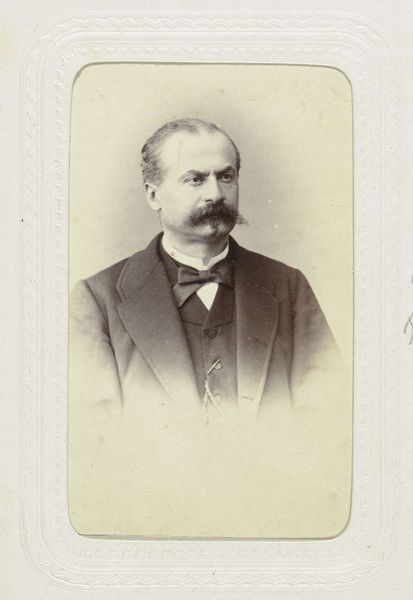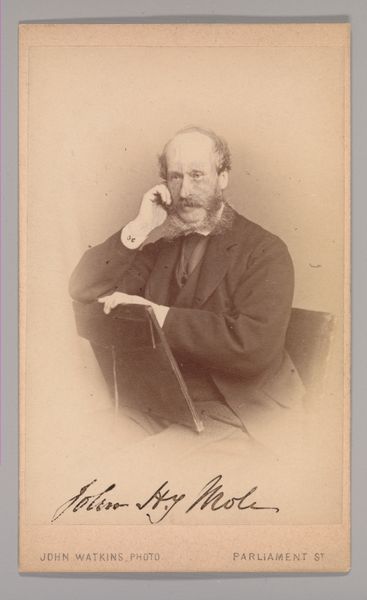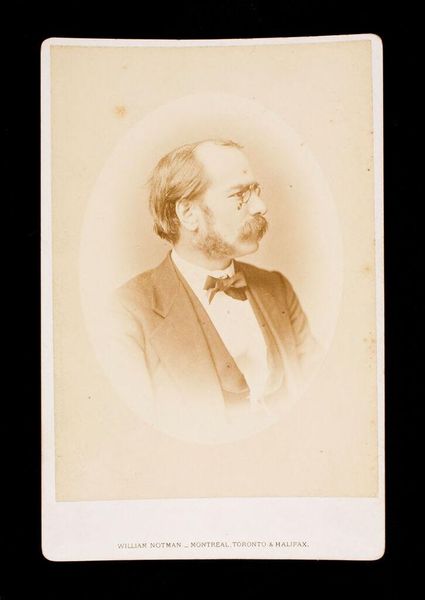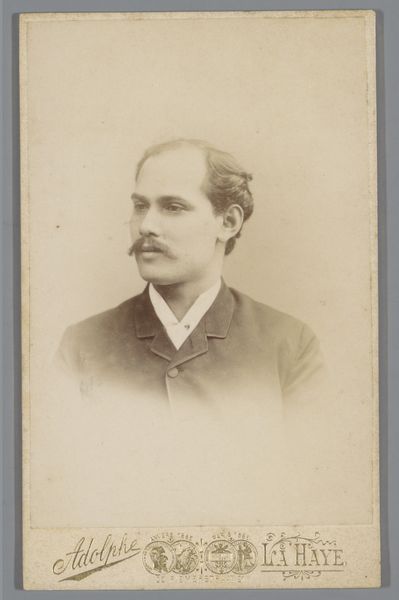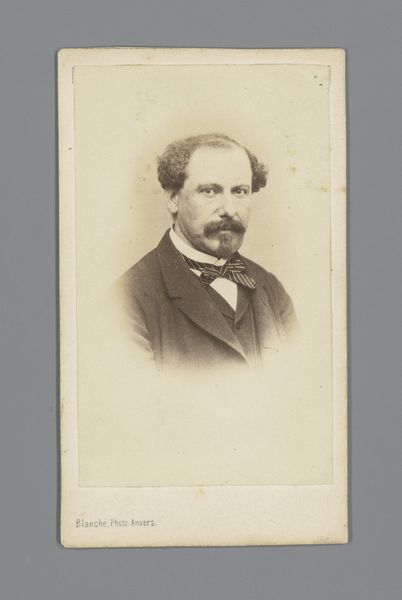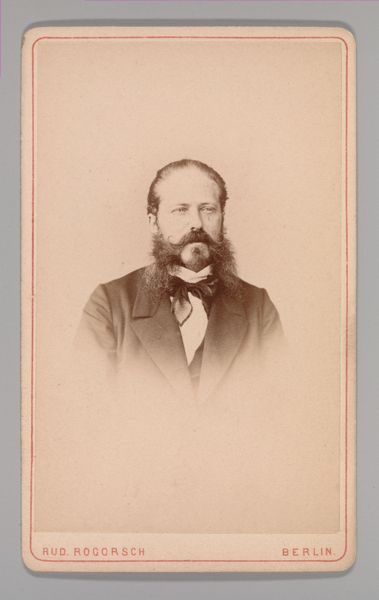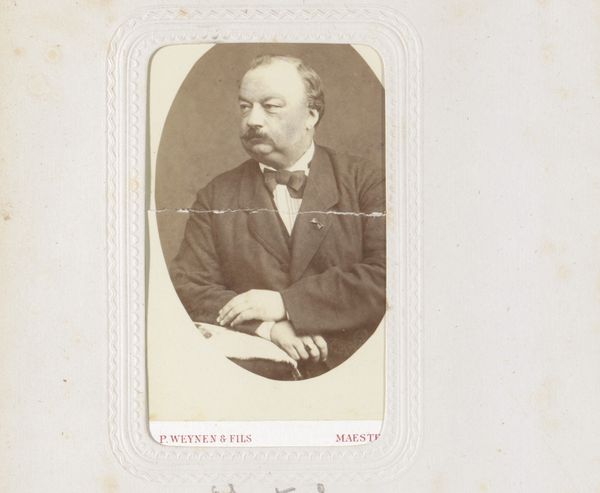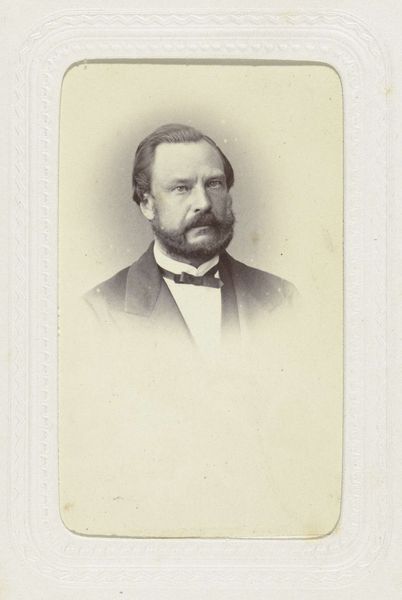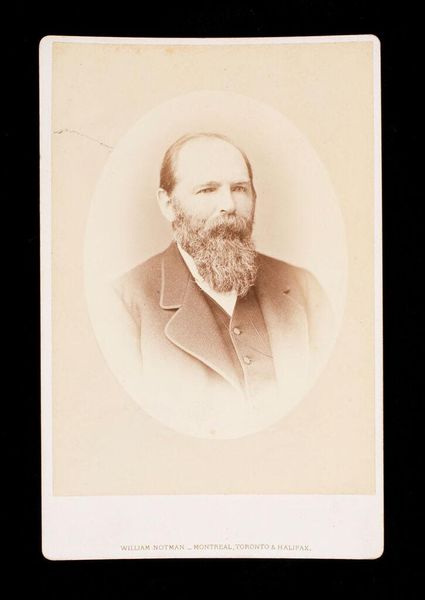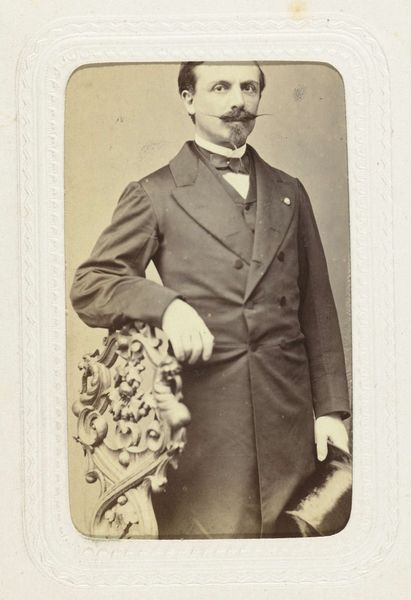
Portret van Johan Philip van der Kellen (1831-1906), stempelsnijder en directeur van het Rijksprentenkabinet c. 1870 - 1890
0:00
0:00
Dimensions: height 91 mm, width 54 mm
Copyright: Rijks Museum: Open Domain
Curator: This photograph captures Johan Philip van der Kellen, director of the Rijksprentenkabinet, sometime between 1870 and 1890. It is an albumen print. Editor: The first thing I notice is its unassuming simplicity. It feels like a very personal object, something meant to be kept close. I am interested in the production techniques to achieve this effect. Curator: The albumen print was a popular method at the time. Think of it: coating paper with egg whites before adding the silver nitrate. The process, labor-intensive and chemically driven, speaks volumes about the era’s intersection of science and art. And look closely – can you see any signs of manipulation of the print itself? Editor: Definitely. We are not merely observing van der Kellen as an individual, but the construct of him in his official role within an established, revered institution. The controlled pose, the respectable suit, even the subtle backdrop—everything reinforces his position within the cultural hierarchy of the late 19th century. Curator: Right, and this "Carte de Visite", produced by A. Cucumus & Cie. and preserved at the Rijksmuseum, illustrates the dissemination of imagery and power through material objects. It is fascinating how a piece of photographic paper serves a cultural function. Editor: Consider its display context: this photograph circulated amongst other images of similar status figures, impacting visual culture of the time. Did such controlled photographic portrayals cement perceptions or provide grounds for resistance? Curator: Well, I suppose that brings up another interesting point: was Van der Kellen attempting to reinforce existing social hierarchies, or was he simply acting within the confines of accepted practice at the time? Editor: Yes, exactly. It’s a beautiful thing to consider, this intersection of artistic technique and cultural expression frozen within this humble photograph. Curator: Absolutely. Analyzing the construction of such historical depictions deepens our knowledge of how individuals engaged in broader cultural, financial, and political landscapes.
Comments
No comments
Be the first to comment and join the conversation on the ultimate creative platform.
